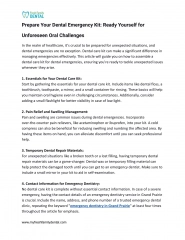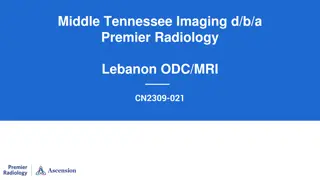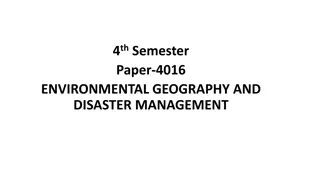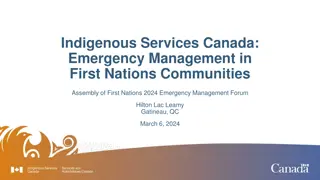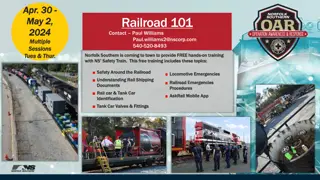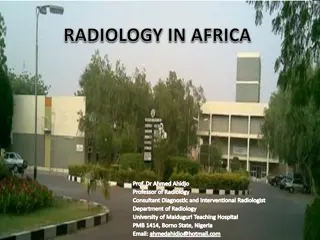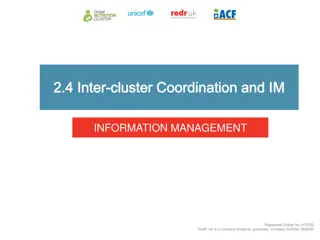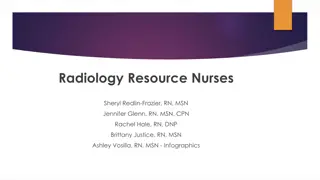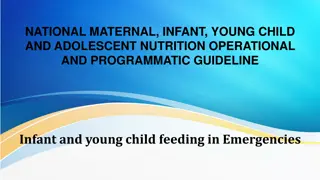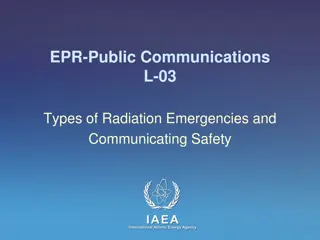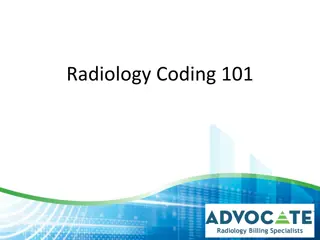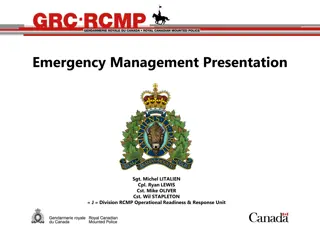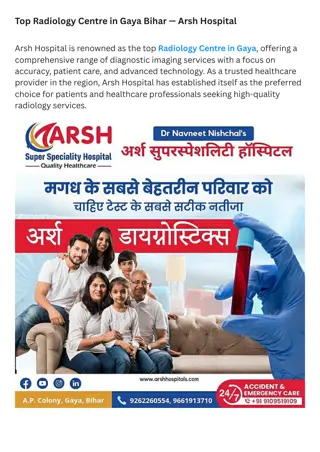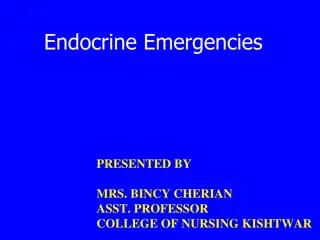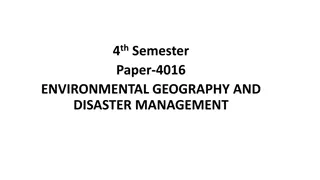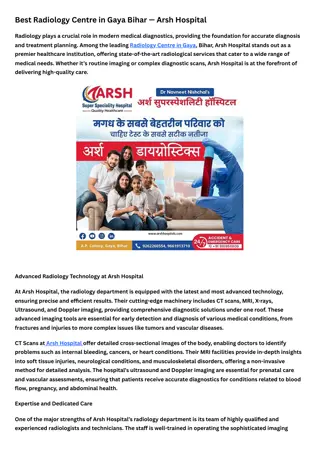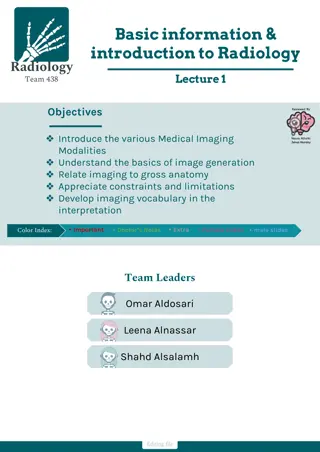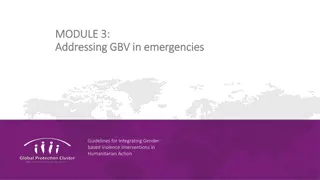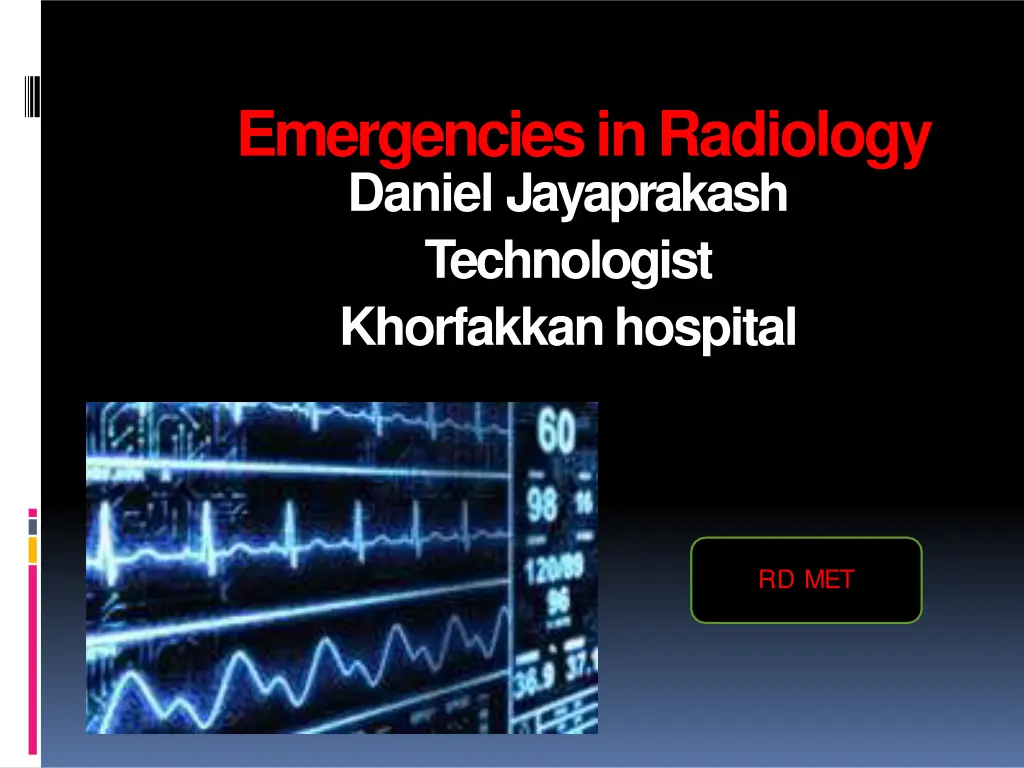
Emergencies in Radiology: Key Scenarios and Treatment Protocols
Explore essential information on managing emergencies in radiology, including treatment protocols for various critical conditions. Test your knowledge with pre-quiz questions covering medication administration and CPR guidelines. Be prepared to handle adverse reactions during imaging procedures effectively.
Download Presentation

Please find below an Image/Link to download the presentation.
The content on the website is provided AS IS for your information and personal use only. It may not be sold, licensed, or shared on other websites without obtaining consent from the author. If you encounter any issues during the download, it is possible that the publisher has removed the file from their server.
You are allowed to download the files provided on this website for personal or commercial use, subject to the condition that they are used lawfully. All files are the property of their respective owners.
The content on the website is provided AS IS for your information and personal use only. It may not be sold, licensed, or shared on other websites without obtaining consent from the author.
E N D
Presentation Transcript
Emergencies in Radiology Daniel Jayaprakash Technologist Khorfakkanhospital R D MET
EMERGENCIES IN RADIOLOGY stable Cardio respiratory collapse Criticallyill Rescue intervention M.E.T instability
EMERGENCIES IN RAIOLOGY TREATEDFOR 1.Neurological(20%). 2Cardiovascular (16%). 3.Abdominal(16%). 4.Respiratory(14%). M.E.Tactivated for 1.Neurological(39%). 2.Cardiac (38%). 3.Respiratory(22%) Comorbidconditions. 1.COPD(23%). 2DM(20%). 3.CCF(19%).
EMERGENCIES IN RADIOLOGY UNITS. 1.OPD. 2.ICU. 3.A/E M.E.T.CALLS 1.CT. 2.MR. 3.ROUTINE XRAY
EMERGENCIES IN RADIOLOGY Pre-Quiz 1. A patient experiences an acute adverse contrast reaction. Symptoms include facial swellingandstrider.Whatisthefirst medication that should beadministered? a.Benadryl b.Epinephrine c.Corticosteroid d.Atropine
EMERGENCIES IN RADIOLOGY Pre-Quiz 2. The correct dose/route/concentration of epinephrinethat shouldbeadministeredinthe settingofanacuteallergiccontrastreactionis: a. 1 mg, IV,1:10,000 b. 0.3 mg,IV, 1:1,000 c. 0.3 mg, IM,1:1,000 d. 1 mg, IM,1:10,000
EMERGENCIES IN RADIOLOGY Pre-Quiz 3. A patient experiences an acute adverse reactionduringaCTscan.Symptomsinclude diaphoresis, hypotension and bradycardia. What medication should beadministered? a.Benadryl b.Epinephrine c.Corticosteroid d.Atropine
EMERGENCIES IN RADIOLOGY Pre-Quiz 4.ApatientintheRadiologydepartmentsuddenly becomes pulse less and unresponsive. You initiate CPR.Whatistheappropriaterateof compressions: breaths? a.15:2 b.15:1 c.30:2 d.100:2
EMERGENCIES IN RADIOLOGY Pre-Quiz 5. According to the 2010 American Heart AssociationBasicLifeSupportguidelines,what is the first step when encountering an unresponsiveperson? a. Openairway b.Provide rescuebreaths c.Perform chestcompressions Activate emergency response system.
EMERGENCIES IN RADIOLOGY Pre-Quiz 6. According to the 2010 American Heart AssociationBasicLifeSupportguidelines,what is the second step when encountering an unresponsiveperson? a. Openairway b.Provide rescuebreaths c.Perform chestcompressions Activate emergency responsesystem
EMERGENCIES IN RADIOLOGY SECONDARY APPROACH PRIMARY APPROACH SKILLS AND EQUIPMENT
EMERGENCIES IN RADIOLOGY INSTABILITY 1.BP. 2HEARTRATE. 3 .RESPIRATORYRATE. 4.O2 SATURATION. RAPID RESPONSE EARLY RECOGNITION AGRESSIVE INTERVENTION
EMERGENCIES IN RADIOLOGY M.E.T. CRITEREA FOR CALL Cardiovascular. 1. Heartrate <40/mt or>140- 160/mt. 2. BP<80mmHg or>200mmHg Systolic.or >110mmHg Diastolic RESPIRATORY 1.RATE<8/mt or>36/mt. 2.Breathing difficulty. 3.O2 < 85%
EMERGENCIES IN RADIOLOGY Neurologi c changes Level ofconsciousness. Pupillaryassessment. Motor function. Sensoryfunction. Vitalsigns. WHO CANCALL? PUBLIC,RT,NURSE /PHYSICIAN
EMERGENCIES IN RADIOLOGY CPR 1.ACTIVATE M.E.T. 2.START CPR(30:2). 3.O2ADMINISTRATION
EMERGENCIES IN RADIOLOGY CPR-2010 guidelines Tappatient onshoulderandshoutatthem ActivateMET Chest compressions should beinitiated immediately.(30:2) (CAB rather thanABC) Provide2breathsAFTERfirst 30chestcompressions
EMERGENCIES IN RADIOLOGY GLOSSARY: Anaphylactic-an extremely life threatening allergicreactionto anantigen.(previousexp). Diaphoresis-increase insweating. Inotropic-adrugthat actsonmyocardium affecting itscontraction.
EMERGENCIES IN RADIOLOGY Ventricular fibrillation-twitching of the ventricle,causing a non effectivecontraction. Ventricular tachycardia-rapid contraction of ventriclecausinginsufficientflow outofheart. Pulseless electrical activity-electricalactivity insufficient toproduce a contraction.(PEA)
EMERGENCIES IN RADIOLOGY Allergylike Physiologic Urticaria Nausea/vomiting Diffuseerethema Flushing/warmth/chills Angio edema(facialedema) Anxiety Laryngealedema Hypertensiveemergency bronchospasm Seizures Anaphylacticshock(hypotension +,tachycardia) Vasovagal reaction(hypotension+ bradycardia)
EMERGENCIES IN RADIOLOGY Allergic-LikeReactions Urticaria-raisedredskinwhealsandpruritis. Erythema -Diffuseskin redness . Bronchospasm -resembles asthma attackand patients may have history of asthma attacks Anxious patient ,wheezing, shortness of breath
EMERGENCIES IN RADIOLOGY Allergic-LikeReactions Angioedema-swellingof faceandlips Laryngeal edema -serious, lifethreatening condition ,Anxious patient. Stridor,coughing,hoarseness,feelingof lump inthroat
EMERGENCIES IN RADIOLOGY Allergic-LikeReactions Anaphylacticreaction. Hives, skin redness, angioedema, airway narrowing,andhypotensionwithtachycardia. Life-threatening
EMERGENCIES IN RADIOLOGY Adrenaline:(IM0.3mlof 1:1000)upto2ml. IV 1ml of1:10000. It s a cardiac stimulant,vasoconstrictionof peripheralvessels,bronchodilator. Used inanaphylactic shock,laryngeal edema and severebronchospasm. Chlorpheniramine:10-20 mg slow IV. Blockstheactionof histamines. Usedto treat urticaria,andanaphylactic reaction.
EMERGENCIES IN RADIOLOGY Hydrocortisone :200mg slowIV. Inhibits inflammatorymediators Used in treatment and prevention of severe reaction.actionistoo slowandnotusefulinacute reaction. Prednisolone:50mgorally 13,7, and 1hr before contraststudy. Buscopan:40mg Itis antispasmodic,and reduces peristalsis. Metaclopramide:5-10mgIV Itsanantiemetic,increasesgastricmotility and gastricemptying
EMERGENCIES IN RADIOLOGY Atropine:0.5-1mgIV restoresnormalconductionandelectrical activity ofheart. Used inAsystole,Bradycardia,PEA. Furosemide:20-40mgIV.(lasix) It sadiureticthat inhibits reabsorptionof sodium andchloride. Used torelieve pulmonary congestion
EMERGENCIES IN RADIOLOGY Localanaesthetics: Lignocaine hydrochloride 10mg/ml(20ml). stabilises nerve membrane preventing generation and transmission ofimpulse. Used in ventricularfibrillation,ventricular tachycardia,ventriculararrhythmia.
EMERGENCIES IN RADIOLOGY Analgesics: Morphineandpethidine(1-3mgslowIV5mt). It increasesthe venouscapacitanceandreduces systemic vascular resistance relieving pulmonarycongestion. Iseffectiveinchestpainandacutepulmonary edema
EMERGENCIES IN RADIOLOGY Sedatives: Diazepam-(2-10mg slow IV). It samusclerelaxantandanticonvulsantalsorelieves anxiety andtension Antihypertensivedrugs: Nifedepine -10mg(30mg) Vasodilators-preventand relieve vascular spasm.
EMERGENCIES IN RADIOLOGY Case1 A56yearoldfemaleisscanned to ruleout acutediverticulitis.After contrastinjection patient is experiencing dyspnea, urticaria, andfacialswelling.Whatisto bedone?
EMERGENCIES IN RADIOLOGY Assessment ActivateMET Allergic Algorythm IV ACCSESS 100% O2ADM BRONCHIAL SPASM LARYNGEALOEDEMA URTICARIA/ERYTHEMA ADRENALINE IM:0.3mg(0.3ml of1:1000) upto 1ml IV:0.1mg(iml of1:10000) INHALER 2PUFFS BENADRYL25-50MG
EMERGENCIES IN RADIOLOGY Assesment ActivateMET Anaphylaxis algorythm IV ACCSESS 100% O2ADM EPINEPHRINE IM:0.3mg(0.3ml of1:1000) upto 1ml IV:0.1mg(iml of1:10000) SYSTEMIC SYMPTOMS HYPOTEN+TACHY IV fluids:1 L rapid bolus normalsaline
EMERGENCIES IN RADIOLOGY Case2 A 23 yrs male is scheduled to have a MR arthrogram of the right shoulder. Upon seeingtheneedle,heimmediatelybecomes diaphoretic andlight-headed. How do yourespond?
EMERGENCIES IN RADIOLOGY Activateemergency responseteam VASOVAGAL ALGORITHM Assessment:ABC s and vitalsigns IV access 100% O2by mask Monitor, pulse oximeter 1.Trendelenburg position elevate legs by 60degrees 2.IVfluids 1Lrapidbolus normalsaline SEVERE, BRADYCARDIC MILD Atropine 0.6-1.0 mg IV administered slowly,followed bysalineflushRepeat q3-5min,upto 3mgtotal No othertreatment necessary
EMERGENCIES IN RADIOLOGY Case3 18 yrsmalesentforCTheadfor seizures. WhileontheCTtable,thepatientstarts seizing again. What do youdo?
EMERGENCIES IN RADIOLOGY Activateemergency responseteam Assessment:ABC s and vitalsigns SEIZURES ALGORITHM Protect patient, cleararea Turnpatient onsideto avoid aspiration Suction airway asneeded IV access 100 % O2by mask ifnot vomiting Lorazepam IV 2-4 mg, administered slowly,max dose of 4mg UNREMITTING SEIZURE
EMERGENCIES IN RADIOLOGY Case4 NPO prior toexam Diabetics Patientsfeelweak,dizzyorlightheaded Patientlookspaleordiaphoretic. Whatwill youdowhenthepatientgets hypoglycemic?
EMERGENCIES IN RADIOLOGY Assessment:ABC s and vitalsigns Activateemergency responseteam HYPOGL YCEMIA ALGORITHM IV access 100% O2 bymask Monitor, pulseoximeter HYPOGLYCEMIA Oralglucose Juice Glucose tablet/gel 15g No IVaccess Patient can tswallow D50W 1 ampule (25g) IV Administer slowly over 2min Glucagon 1 mgIM
EMERGENCIES IN RADIOLOGY Case5 35 yrs female is having a CT scan to rule out acute appendicitis. During the injection, the patient complains of severe burning pain in the forearm at the injection site. The technologists stop the injection and notice markededemaanderythemaattheinjection site. What do youdo?
EMERGENCIES IN RADIOLOGY Assessment and vitalsigns EXTRA VASATION ALGORITHM Examine affected limb,check distal pulses, capillary refill, motor functionand sensation - Elevate affectedextremity -Cold or warmcompresses (noevidence) -Analgesia LOWCLINICAL CONCERN HIGHCLINICAL CONCERN* Surgical consultation Clinicalfollow- uprequired *Progressiveswellingorpain,alteredtissueperfusion(decreasedcapillaryrefill), changeinsensation,skinulcerationorblistering
EMERGENCIES IN RADIOLOGY Case6 A65yrsmaleishavingaCTAof theabdomen to R/O abdominal aortic aneurysm. The injectionmalfunctionsandalargequantity of airisinjected.Themandevelopsdyspneaand chest pain. Whatdo you do?
EMERGENCIES IN RADIOLOGY Assessment:ABC s and vitalsigns Activateemergency responseteam AIREMBOLISM ALGORITHM Placepatientinleft lateral decubitusposition 100% O2 bymask
EMERGENCIES IN RADIOLOGY Case7 A 75 yo female is brought to the CT scanner. Shesuddenlybecomesunresponsive.Youare alone .What do you do?
EMERGENCIES IN RADIOLOGY Activateemergency responseteam Assessment:ABC s and vitalsigns CARDIOVASCULAR ALGORITHM IV access 100% O2 bymask Monitor, pulseoximeter HYPERTENSION SBP>200mm Hg DBP>120mmHg ANGINA PULMONARYEDEMA Nitroglycerin 0.4mg SL Morphine 2 mgIV Labetalol 20 mg IV Administer slowlyover 2min Elevate head ofbed Furosemide 20-40mg IV (administer slowly over 2min)Morphine2mgIV Nitroglycerin 0.4 mg SL Furosemide 20-40 mgIV (administerslowlyover2min)
EMERGENCIES IN RADIOLOGY Contrast inpregnancy Effectsofiodinated contrastandgadolinium are incompletelyunderstood Bothagentswill crossthe blood-placentalbarrier and enter thefetus Thereisnotenoughevidenceto suggestthat iodinatedcontrastissafefor the fetus Patient should be informed about the potential risksandbenefits,alternative diagnostic options, and consent should bedocumented
EMERGENCIES IN RADIOLOGY Gadolinium Noknownteratogenicormutageniceffects Theoreticalpotentialriskfordevelopmentof NSF, although no cases have beenreported Generally recommended thatgadolinium shouldnotbeusedinpregnantpatients Risks are unknown and gadoliniumshould onlybeusedwith greatcaution
EMERGENCIES IN RADIOLOGY Iodinated contrast in women who arebreast- feeding Nearly100%of iodinatedcontrastisclearedfrom the bloodstream by 24 hours in patients with normal renalfunction Therefore,lessthan0.01%of injectedIVcontrast isabsorbedbyinfantfrom breastmilk It issafefor mother andinfantto continuebreast feeding Ifmother remainsconcerned,shemayexpress anddiscardbreastmilk for upto 24hours Novalueto stopbreastfeedingbeyond24hours
EMERGENCIES IN RADIOLOGY Universalprecaution Stepsto betakenonexposureto HIV,Hepatitis B, other body fluids,& contaminatedsharps. Needlesticksto bewashedwith soapand water. Splashesto nose,mouthorskinto beflushed with water. Eyesto beirrigatedwith water,saline. Prickedfingersshouldnot beput into mouth. Reporttheincidentandtreat asanemergency.
EMERGENCIES IN RADIOLOGY Summary: Early recognition,rapidresponse, efficient supporttoMET. Basic things activateMET, administerO2,
References ACRCommitteeonDrugsandContrastMedia.ACRManualonContrastMedia Version9.2013.Accessedathttp://www.acr.org/Quality- Safety/Resources/Contrast-ManualonAugust26,2013. BergRA,HemphillR,AbellaBS,AufderheideTP ,CaveDM,HazinskiMF,Lerner EB, Rea TD, Sayre MR, Swor RA. Part 5: Adult basic life support: 2010 American HeartAssociationGuidelinesforCardiopulmonaryResuscitationandEmergency CardiovascularCare. Circulation. 2010;122(suppl 3):S685 S705. BushWHandSegalAJ.Recognitionandtreatmentof acutecontrastreactions. Applied Radiology2009;38:16-21. ChooKJL,SimonsE,SheikhA.Glucocorticoidsfor thetreatmentofanaphylaxis: Cochrane systematic review. Allergy2010;65:1205 1211 Lightfoot CB et al. Survey of radiologists knowledge regarding the managementof severecontrastmaterial inducedallergicreactions.Radiology 2009;251:691-696 SheikhA,ShehataYA,BrownSGA,SimonsFER.Adrenalinefor thetreatmentof anaphylaxis:cochranesystematicreview.Allergy2009;64:204 212. SheikhAet al.H1-antihistaminesfor thetreatmentof anaphylaxis:Cochrane systematic review. Allergy2007;62:830 837.

